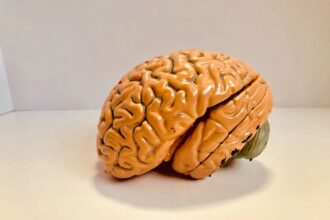Non-attachment is often misunderstood as a lack of care or indifference. However, it is essential to recognize that non-attachment is not about detaching yourself from life or the people around you. Instead, it is about cultivating a healthy relationship with your thoughts, emotions, and possessions.
When you practice non-attachment, you learn to appreciate the present moment without clinging to it or fearing its loss. This mindset allows you to experience life more fully, as you are not weighed down by the burdens of expectation or desire. At its core, non-attachment encourages you to let go of the need for control.
You begin to understand that everything in life is transient, and holding on too tightly can lead to suffering. By embracing non-attachment, you create space for acceptance and gratitude. You learn to enjoy experiences for what they are, rather than what you want them to be.
This shift in perspective can lead to profound changes in your emotional well-being and overall outlook on life.
Key Takeaways
- Non-attachment means letting go of the need to possess and control things, people, and situations.
- Letting go of material possessions is the first step to practicing non-attachment and finding inner peace.
- Releasing emotional attachments is essential for achieving a state of inner peace and contentment.
- Embracing impermanence helps us understand that change is inevitable and allows us to practice non-attachment.
- Non-attachment in relationships allows for freedom, growth, and love without possessiveness or fear.
Letting Go of Material Possessions: The First Step to Non-Attachment
One of the most tangible ways to begin your journey toward non-attachment is by letting go of material possessions. In a world that often equates worth with ownership, it can be challenging to break free from the belief that your belongings define you. However, when you start decluttering your physical space, you also create a mental and emotional space for growth.
By releasing items that no longer serve a purpose in your life, you can cultivate a sense of freedom and clarity. As you embark on this process, consider the emotional weight that certain possessions carry. Each item may hold memories or feelings that tether you to the past.
By consciously choosing to let go of these items, you are not only decluttering your environment but also liberating yourself from emotional baggage. This act of letting go can be incredibly empowering, allowing you to focus on what truly matters in your life rather than being distracted by material concerns.
Releasing Emotional Attachments: The Key to Inner Peace

Emotional attachments can be just as heavy as physical possessions. You may find yourself clinging to relationships, past experiences, or even specific outcomes that no longer serve your well-being. Recognizing these attachments is the first step toward releasing them.
When you hold onto emotions tied to past events or relationships, you may find yourself stuck in cycles of pain and disappointment. By practicing non-attachment, you can learn to observe these feelings without becoming consumed by them. To release emotional attachments, it is essential to cultivate self-awareness.
Take time to reflect on your feelings and identify what you are holding onto. Journaling can be a helpful tool in this process, allowing you to articulate your thoughts and emotions. As you gain clarity, practice letting go by consciously choosing to focus on the present moment rather than dwelling on the past.
Embracing Impermanence: How Non-Attachment Relates to Change
| Topic | Metrics |
|---|---|
| Non-Attachment | Understanding, Practice, Benefits |
| Impermanence | Concept, Acceptance, Impact |
| Change | Resilience, Adaptability, Growth |
Life is inherently impermanent; everything is subject to change. Embracing this truth is a crucial aspect of practicing non-attachment. When you accept that nothing lasts forever, you can begin to appreciate the beauty of each moment without clinging to it.
This acceptance allows you to navigate life’s ups and downs with grace and resilience. Instead of fearing change, you learn to see it as an opportunity for growth and transformation. Understanding impermanence also helps you cultivate gratitude for the present moment.
This awareness encourages you to savor each moment fully, whether it is a joyful experience or a challenging one. By embracing impermanence, you free yourself from the anxiety of holding onto what cannot be retained, allowing for a more fulfilling and liberated existence.
Non-Attachment in Relationships: Finding Freedom in Love
Non-attachment does not mean detaching from relationships; rather, it means engaging in them with a sense of freedom and openness. When you practice non-attachment in relationships, you allow love to flow without the constraints of expectation or possessiveness. This approach fosters healthier connections based on mutual respect and understanding rather than fear of loss or dependency.
In relationships marked by non-attachment, both partners can thrive as individuals while still supporting one another’s growth. You learn to appreciate your loved ones for who they are rather than who you want them to be. This shift in perspective can lead to deeper intimacy and trust, as both partners feel free to express themselves authentically without fear of judgment or rejection.
The Role of Non-Attachment in Personal Growth and Development

Non-attachment plays a vital role in personal growth and development by encouraging you to step outside your comfort zone. When you let go of rigid expectations and fears about failure, you open yourself up to new experiences and opportunities for learning. This mindset allows you to embrace challenges as valuable lessons rather than obstacles to be avoided.
As you cultivate non-attachment, you may find that your self-esteem becomes less tied to external validation or achievements. Instead of measuring your worth by accomplishments or possessions, you begin to recognize your inherent value as a person. This shift fosters resilience and adaptability, empowering you to pursue your passions and dreams without the weight of self-doubt holding you back.
Cultivating Non-Attachment: Practices and Techniques
To cultivate non-attachment in your life, consider incorporating mindfulness practices into your daily routine. Mindfulness meditation can help you develop greater awareness of your thoughts and emotions, allowing you to observe them without judgment or attachment. As you practice being present in the moment, you’ll find it easier to let go of worries about the future or regrets about the past.
Another effective technique is visualization. Imagine yourself releasing attachments—whether they are material possessions or emotional burdens—into the universe. Visualize these attachments floating away like balloons, freeing you from their weight.
This practice can serve as a powerful reminder that letting go is an essential part of living fully and authentically.
Overcoming Fear and Anxiety Through Non-Attachment
Fear and anxiety often stem from a desire for control over uncertain outcomes. By practicing non-attachment, you can learn to navigate these feelings with greater ease. When you accept that uncertainty is a natural part of life, you can approach challenges with a sense of curiosity rather than dread.
This shift allows you to respond more effectively to difficult situations without being paralyzed by fear. Additionally, embracing non-attachment can help reduce anxiety related to perfectionism or the need for approval from others. When you let go of these expectations, you create space for self-compassion and acceptance.
You begin to understand that it is okay not to have everything figured out; life is a journey filled with ups and downs that contribute to your growth.
The Connection Between Non-Attachment and Mindfulness
Non-attachment and mindfulness are closely intertwined concepts that complement each other beautifully. Mindfulness encourages you to be present in each moment without judgment or distraction, while non-attachment teaches you how to let go of clinging thoughts and emotions that may arise during those moments. Together, they create a powerful framework for living more fully and authentically.
By practicing mindfulness, you become more aware of your attachments—both material and emotional—and how they influence your thoughts and behaviors. This awareness allows you to make conscious choices about what to hold onto and what to release. As a result, mindfulness becomes a tool for cultivating non-attachment, enabling you to navigate life’s challenges with greater ease and grace.
Non-Attachment and Spiritual Enlightenment: A Path to Liberation
Many spiritual traditions emphasize the importance of non-attachment as a pathway toward enlightenment or liberation. By letting go of desires and attachments that bind you to the material world, you can experience a deeper connection with your true self and the universe around you. This journey toward spiritual awakening often involves confronting fears and limiting beliefs that have held you back.
As you embrace non-attachment on your spiritual path, you’ll likely find that your perspective shifts dramatically. You may begin to see life as a series of interconnected experiences rather than isolated events defined by attachment or aversion. This realization fosters a sense of unity with all beings and encourages compassion toward yourself and others.
Living Freely: Embracing Non-Attachment in Everyday Life
Ultimately, embracing non-attachment allows you to live more freely in everyday life. You become less burdened by worries about the future or regrets about the past, enabling you to fully engage with each moment as it unfolds. This newfound freedom empowers you to pursue your passions without fear of failure or judgment.
In practical terms, living with non-attachment means making conscious choices about how you spend your time and energy. You may find yourself prioritizing experiences over possessions or nurturing relationships that uplift and inspire you rather than those that drain your spirit. By embracing non-attachment in everyday life, you’ll discover a profound sense of peace and fulfillment that comes from living authentically and wholeheartedly.
In conclusion, non-attachment is not about detachment but rather about cultivating a healthy relationship with life itself. By letting go of material possessions, emotional burdens, and rigid expectations, you open yourself up to greater freedom and joy. As you embrace impermanence and practice mindfulness, you’ll find that non-attachment becomes a guiding principle in your journey toward personal growth, meaningful relationships, and spiritual enlightenment.
Ultimately, living freely through non-attachment allows you to experience life in all its richness while remaining grounded in the present moment.
In exploring the true meaning of non-attachment, it’s essential to delve into the psychological aspects that underpin this concept. Non-attachment is often misunderstood as indifference or a lack of care, but in reality, it is about cultivating a healthy detachment from outcomes and material possessions, allowing for a more balanced and peaceful life. A related article that provides deeper insights into this topic can be found on Unplugged Psych’s website. This article discusses the psychological benefits of non-attachment and how it can lead to greater emotional resilience and mental clarity. For more information, you can read the full article by visiting




